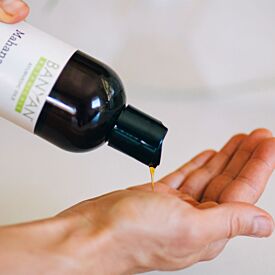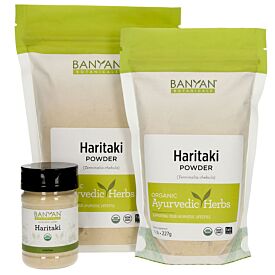Protect Your Health This Winter
There are certain aspects of the winter season that tend to be very vata aggravating: the intense cold, the wind, the dryness, and the increased sense of isolation. Ayurveda teaches us that like increases like, and because these aspects of winter resonate with vata’s nature, the winter can easily lead to a vata imbalance, especially if vata is a key player in your constitution. If you are unsure of your Ayurvedic body type, take the Ayurvedic Profile™ quiz to help you determine your constitution.
You can safeguard your health this winter by learning to recognize the common signs and symptoms of vata accumulation and by responding to imbalances as soon as they arise. Mild signs and symptoms will typically occur in the early stages of vata imbalance, may come and go for some time, and are relatively easy to remedy. Keep in mind that the earlier you can address an imbalance, the easier it will be to correct.
Signs & Symptoms of Vata Imbalance
In the Mind
Mild Imbalances
Changes in your mental state will often be one of the first indications that an imbalance is beginning to manifest. For vata, signs of aggravation include anxiety, nervousness, fear, loneliness, insecurity, restlessness, hyperactivity, giddiness, spaciness, and/or confusion. Excess vata in the mind can also leave you feeling high-strung, like you can’t calm down, or as if you’re perpetually “on edge,” even jumpy. Excess vata can also cause a racing mind, interrupted sleep, a lack of groundedness, a fear of commitment, and forgetfulness.
In The Digestive Tract
Mild Imbalances
The digestive tract is one of the first places that aggravated vata will make itself known. Early signs of vata imbalance include burps, hiccups, gurgling intestines, excessive thirst, gas, bloating, and constipation. Excess vata in the digestive tract can also cause an irregular appetite, mild weight loss, pain in the flanks, pressure under the diaphragm, a dry taste in the mouth, mass peristalsis, diarrhea, dry feces, and/or hemorrhoids. When vata is high, you are also likely to crave meat and fatty, salty, sour, or spicy foods.
In the Circulatory System, Skin, Nails, Scalp, and Hair
Mild Imbalances
Signs of imbalance in the circulatory system, skin, nails, scalp, and hair can indicate when aggravated vata is starting to spread. Excess vata in these areas may cause goose bumps, dryness in the skin, lips, or hair, split ends, cracking skin, heels, nails or cuticles, and dandruff. Excess vata can also cause pallor, lusterless skin, poor circulation, cold hands or feet, insufficient sweat, eczema, and psoriasis.
In the Muscles, Bones, Joints, and Nervous System
Mild Imbalances
Lack of coordination, weakness, muscle fatigue, quivering thighs, tightness, stiffness, and muscle aches, are all signs of excess vata in the musculature. Cracking, popping, or pain in the bones and joints indicates that there is too much vata in these delicate spaces. High vata in the neuromuscular system can also cause ticks, tremors, tingling, numbness, sciatica, nerve pain, a stiff neck, pain around the pelvic girdle, and vague or generalized pain.
Elsewhere in the Body
Mild Imbalances
Some people notice breathlessness, bradycardia, tachycardia, or heart palpitations as excess vata begins to affect them. For others, early signs include yawning, fatigue, hoarseness in the voice, receding gums, toothache, cavities in the teeth, dizziness, ringing in the ears, a pronounced sensitivity to loud noises. Dehydration, excessive urination, or the absence of urination are also associated with excess vata. For women, a vata imbalance can cause PMS symptoms including bloating, low back ache, pain in the lower abdomen, pre-menstrual cramps, insomnia, anxiety, fear, and insecurity. It can also cause irregular, infrequent, or painful periods, painful intercourse, and premature orgasm. In men, excess vata can lead to low sperm counts, low libido, and premature ejaculation.
Promoting Balance During Vata Season
Adopting a seasonally appropriate vata-pacifying diet and lifestyle can help you to prevent vata imbalances from arising in the first place and to coax the body back toward equilibrium, if vata has already started to accumulate. These tips are very useful during the winter season, when vata is more likely to become aggravated.
The Basics of a Vata-Pacifying Diet
You can easily support vata by favoring warm, oily, well-cooked, well-spiced foods and the sweet, sour, and salty tastes. Eat foods that are easy to digest, but also grounding and nourishing, such as root vegetables, soups, and stews. Garnish your food with plenty of ghee. Eat regular meals at regular times and enjoy fresh ginger tea with a little honey between meals so that your agni (digestive fire) remains strong and your appetite is stimulated prior to eating. Drink room-temperature, warm, or hot beverages, and avoid iced drinks. Do your best to limit your intake of raw vegetables, salads, and cold or frozen foods. Reduce the pungent, bitter, and astringent tastes and avoid overly fiery spices, strong black teas, and coffee.
The Basics of a Vata-Pacifying Lifestyle
In general, your vata seasonal routine should aim to reduce wind in the body, protect against dryness, and calm any tendencies toward erratic behavior. Establishing a simple daily routine is one of the most powerful ways you can calm vata. Pick and choose from the following practices to arrange a vata-pacifying routine that will work for you. It is best to rise by 7 a.m. so that you can benefit from the stillness of the early morning hours. Brush your teeth with a nourishing toothpaste such as licorice, haritaki, or mint.1 Hold sesame oil in your mouth and swish it around your gums for 1–3 minutes. Follow your oral hygiene routine with a haritaki water rinse (soak 1 teaspoon powdered haritaki in warm water overnight) and feel free to swallow a bit to ground and rejuvenate vata.1 Before you bathe, massage your skin with warm sesame oil, mahanarayan oil, or vata massage oil to counter any dryness affecting the skin and joints. Administer a few drops of nasya oil to the nasal passages to lubricate the sinuses and calm the mind. For exercise, relax your pace a bit and favor fluid, strengthening activities like walking, tai chi, swimming, and yoga. If you practice yoga, move at a slow, relaxed pace, and try to maintain awareness of your breath. Favor standing poses, inversions, slow sun salutations, twists, alternate nostril breathing, and be sure to leave time for a nice, long shavasana at the close of your practice.
For more detailed information on an Ayurvedic winter routine with vata-pacifying diet and lifestyle recommendations specific to your constitution, click here.









